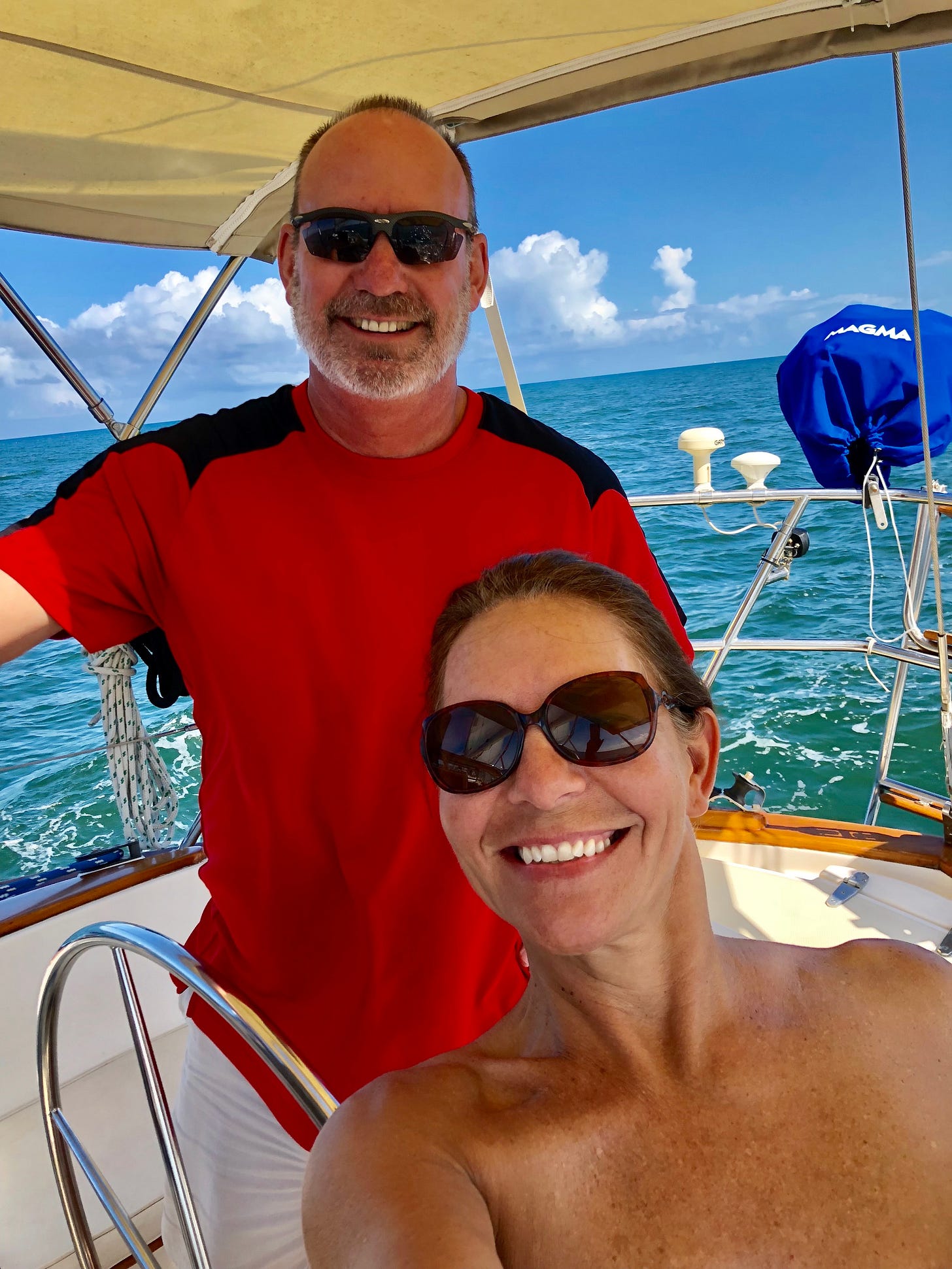Parkinson’s — In the Beginning
Reflections on the slow, subtle start to a life-changing diagnosis.
⛵ A Plan for the Future
In 2018, Christine and I bought a sailboat.
We had big plans—to travel when we retired. I was 55, and Christine was 52. Retirement wasn’t quite here yet, but we were close enough to dream.
“Get this beautiful boat out of the marina and travel before your sixties,” a friend at the marina warned us. “After that, the health stuff starts.”
I rolled my eyes and told him I was in great health.
I had no idea Parkinson’s had already taken its first quiet steps.
🧠 When the First Signs Appeared
It’s often said that no two people experience Parkinson’s the same way. But there are patterns—many of us miss the early signs, and so do doctors.
In my case, I was spending long hours at the keyboard working as a consultant. My right hand, my dominant hand, began to slow down. Typing felt off. Then came a tremor. Mild, but there.

🏥 The VA, the DaTscan, and the Diagnosis
At the time, I was receiving care through the U.S. Department of Veterans Affairs (VA). My primary referred me to neurology. In August 2024, the neurologist diagnosed essential tremor and prescribed primidone.
Side effects were tough. Six weeks later, they increased the dose. No improvement.
Then came a new test I’d never heard of: the DaTscan.
A DaTscan is an imaging test that assesses the function of dopamine in the brain. The test requires that a radioactive tracer be injected into the bloodstream at least four hours before the scan, allowing the tracer to bind to dopamine transporters in the brain. This will enable doctors to visualize the brain's dopamine system and assess its function. It can help diagnose Parkinson’s, but it isn’t definitive on its own.
👨👩👦 My First Exposure to Parkinson’s — My Dad
Before my diagnosis, my only experience with Parkinson’s was my dad.
When he was in his 70s, he developed a tremor in his right hand. Mom was worried. The doctor?
“Don’t worry. Old people shake.”
Sometime later, Dad fell while walking to the mailbox. He thought nothing of it, but the next day he couldn’t get out of his recliner. He was diagnosed with spinal stenosis and referred for surgery.
I accompanied him to the surgical consultation. After a complete evaluation, the surgeon knelt and asked:
“Mr. Anthony, has anyone ever talked to you about Parkinson’s Disease?”
The diagnosis came soon after. No support. No therapy. Just a patch and a shrug.
Dad’s primary care doctor never accepted the diagnosis—until he signed the death certificate.
📬 The Diagnosis—Via Email
My DaTscan was scheduled for January 17, 2025. Christine and I arrived early. After the injection, we wandered the hospital gift shops, grabbed lunch, and returned for the scan.
Thirty minutes later, it was done. The tech said results would be sent to my doctor within the hour.
I was expecting a phone call.
Instead, I got this email:
No phone call. No explanation. Just that.
So I did what any normal person would do: I plugged striatal dopaminergic neurodegeneration into Google. The result:
Parkinson's disease (PD) is a progressive neurodegenerative disorder characterized by the degeneration of dopaminergic neurons in the substantia nigra pars compacta (SNPc).
WTH? Subsequent searches weren’t any better.
The follow-up? It was canceled.
When I finally got someone on the phone, it was a PA. He explained the scan, prescribed meds, and told me to book a follow-up.
I still haven’t had a follow-up appointment with the VA.
🔄 Looking Elsewhere for Care
I’m a military retiree, so I also have private insurance. I used it.
I made an appointment, got a referral, and finally sat down with a reputable neurologist—someone who could walk me through the complexity of what Parkinson’s really is. We immediately began the process of building my care team, including a movement disorder specialist as well as physical, occupational, and speech therapists. I joined the local YMCA, where I can get regular exercise. I also resigned from my consulting job so that I can focus on managing PD.
With a diagnosis comes a thousand questions. And for every answer, two more follow.
But I have a name for what is happening.
I have the beginning of a care team.
I have a path forward.
🪑 From Where I Sit
This is where the story begins.
Not with certainty. Not with easy answers.
But with honesty, curiosity, and a desire to share what I’m learning—from where I sit.






Thank you for sharing. Your sharing and writing enables others to gain an understanding of PD.
Chris,
Sorry hear this.
You may or may not know this, but I have had prostate cancer, throat cancer and had my left kidney removed with a cancerous tumor.
All scary, but I was raised to face your problems head on, and that’s what I did. I would bet that you were raised the same way. Keep moving forward… you got this!
Randy